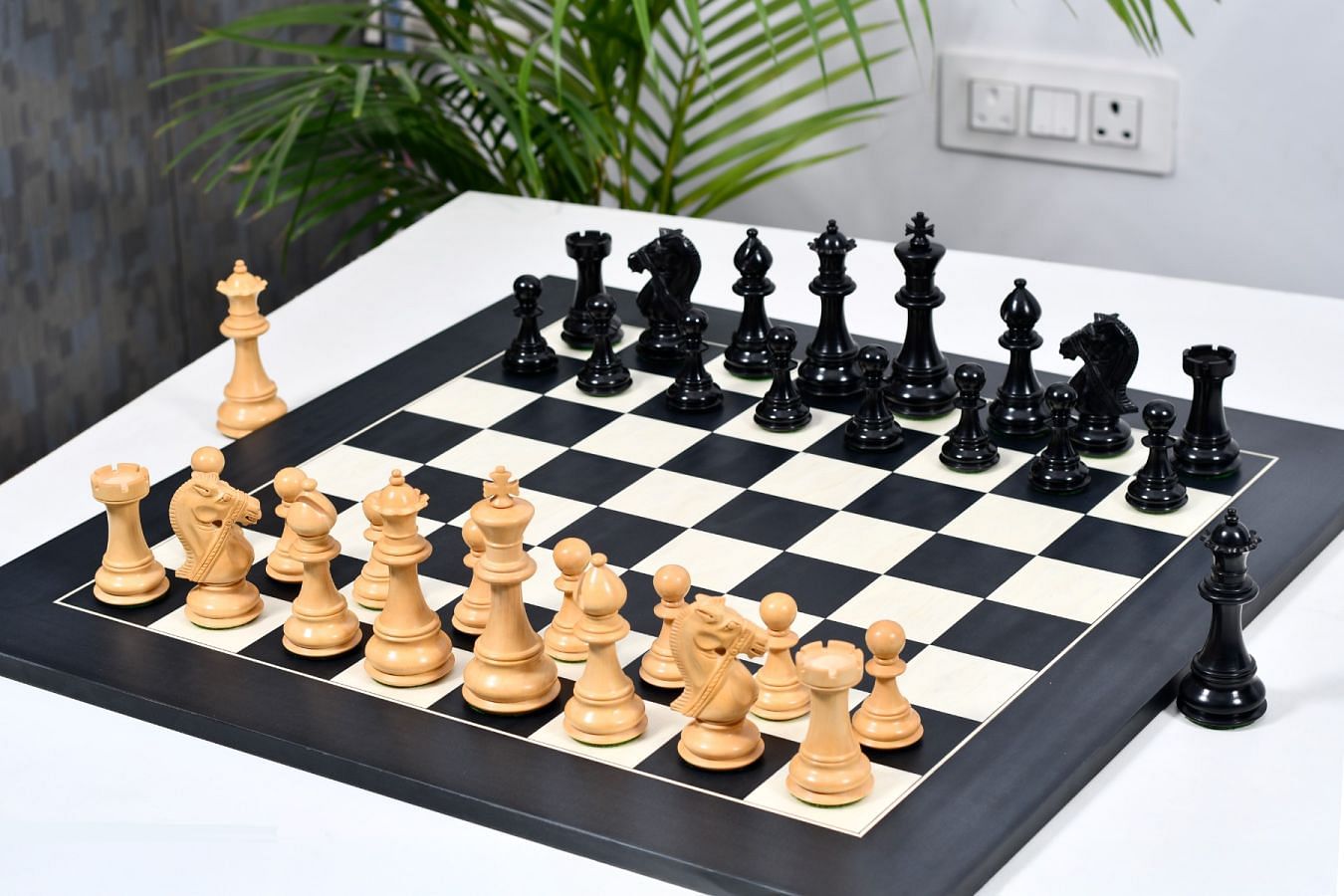Beginner-Friendly Chess Guide for Starters
Wiki Article
All Regarding Chess: Discover the Remarkable History and Strategies Behind the Game
Chess, with its beginnings dating back to 6th century India, has changed significantly over the centuries. This game has actually mesmerized minds worldwide, showcasing the brilliance of epic gamers like Garry Kasparov and Bobby Fischer. Comprehending the details of chess, from the motions of each piece to vital strategies, exposes its deepness. The question stays: what drives the enduring fascination with this ancient game? Exploring its background and strategies may discover much deeper understandings.The Beginnings of Chess: A Journey With Time
Although the specific beginnings of chess remain unsure, historic proof suggests that the game advanced from earlier methods played in India around the sixth century. Called Chaturanga, this very early form of chess included pieces representing infantry, mounties, elephants, and chariots, showing the armed forces strategies of the moment. As Chaturanga spread through trade paths, it adjusted to different cultures, bring about the creation of Shatranj in Persia. This variant presented brand-new policies and item motions, laying the foundation for modern chess.Chess Prodigies: Noteworthy Figures in the Game's History
Throughout chess history, remarkable prodigies have arised, forming the game's landscape and motivating future generations. From fabulous champs who dominated the boards in their time to modern talents redefining the limitations of young people and skill, these gamers have actually made enduring marks on the sporting activity. Their tales highlight not only individual radiance however additionally the advancing nature of chess as an affordable endeavor.Legendary Chess Champions
Chess has actually been shaped by the radiance of various famous champions whose contributions have actually left an indelible mark on the game. Figures like Garry Kasparov, recognized for his vibrant style and unequaled tactical depth, dominated the chess globe throughout the late 20th century. Anatoly Karpov, his rival, showcased remarkable positional understanding and mental expertise, protecting multiple globe titles. Bobby Fischer, an American natural born player, reinvented chess with his unequaled skill and intense focus, culminating in his 1972 Globe Championship success. Additionally, José Raúl Capablanca's all-natural capability and endgame proficiency set new requirements in the early 20th century. These champs not only succeeded in competitors yet additionally motivated generations, forming chess right into a worldwide sensation commemorated for its intellectual roughness and creativity.Modern-Day Prodigies
What makes a chess prodigy really impressive? The capacity to understand complex strategies at a tremendously young age sets them apart. Modern-day chess prodigies like Magnus Carlsen, Fabiano Caruana, and Alireza Firouzja have captivated audiences with their phenomenal skill. Carlsen, becoming a Grandmaster at simply 13, redefined expectations and ascended to Globe Champion status. Caruana, known for his deep preparation and tactical prowess, has continually tested the elite. Firouzja, born in 2003, represents the brand-new generation, integrating creative thinking with ruthless passion. These players exhibit a blend of natural ability, strenuous training, and psychological perseverance, influencing the game's development. Their contributions ensure that chess stays a dynamic and dynamic discipline, motivating future generations of players worldwide.Comprehending the Chessboard: Parts and Their Motions
The chessboard offers as the battlefield where complicated methods unfold, featuring a distinct set of pieces, each with distinct motions and roles. Comprising 64 squares arranged in an 8x8 grid, it is home to the king, queen, rooks, knights, bishops, and pawns. The king, one of the most vital item, relocates one square in any type of instructions, while the queen, the most effective, can go across any type of number of squares up and down, flat, or diagonally. Rooks relocate straight lines, whereas diocesans glide diagonally across the board. Knights have an unique L-shaped activity, jumping over other items. Pawns advance one square but capture diagonally, with the alternative to relocate two squares ahead on their initial move. Each piece's motion contributes to the detailed dancing of method and techniques, making the chessboard a dynamic phase for intellectual fight. Recognizing these motions is fundamental for players aiming to navigate the intricacies of the game.
Vital Strategies for Beginners: Tips to Improve Your Game
Understanding the activities of chess items lays the groundwork for creating reliable techniques. For newbies, concentrating on regulating the visit site center of the board is crucial. This allows for greater flexibility and influence over the game. Creating pieces early, instead of relocating the same piece multiple times, can help develop a strong setting.Additionally, gamers need to prioritize king security by castling early, ensuring the king is stashed from hazards. Acknowledging tactical possibilities, such as forks, pins, and skewers, can supply benefits in material gain. It is also vital to plan ahead; preparing for an opponent's actions fosters far better defensive and offending play.
Preserving a balanced method in between hostile and defensive methods can stop unnecessary blunders. By executing these essential techniques, newbies can improve their gameplay and build a strong foundation for future renovation in chess.
Advanced Strategies: Raising Your Chess Abilities
In the domain name of chess, mastering innovative methods can significantly enhance a player's ability. Acknowledging tactical patterns, grasping endgame methods, and comprehending opening up principles are vital aspects that boost one's game. These parts not only improve general efficiency but likewise foster much deeper strategic reasoning.
Tactical Patterns Acknowledgment
Recognizing tactical patterns is important for elevating chess abilities Full Report to a greater degree. Players who grasp these patterns can determine opportunities for tactical maneuvers, boosting their chances of success. Common patterns consist of forks, pins, skewers, and found assaults, each offering strategic benefits when performed efficiently. Comprehending these motifs permits gamers to anticipate their challenger's relocations and counter them successfully. Additionally, researching timeless games can expose exactly how masters used tactical patterns to safeguard triumphes. Routine practice and analysis of one's own video games can better reinforce pattern acknowledgment, allowing gamers to react swiftly and accurately during matches. Eventually, refining this ability transforms the strategy to chess, linking the void in between amateur and innovative play.Endgame Approaches Mastery
Effective endgame approaches can significantly affect the result of a chess match, often determining the distinction in between a win and a draw. Advanced gamers comprehend the significance of piece sychronisation and the application of pawns in the endgame. Secret strategies consist of advertising pawns to queens and creating passed pawns that can advance unblocked. Identifying vital positions, such as the resistance and zugzwang, is vital for accomplishing advantageous arrangements. Mastery of endgame strategies, such as king and pawn versus king scenarios, can turn possible losses into attracts or wins. Players should likewise focus on streamlining the position when in advance, exchanging pieces to convert material benefits into triumph. Continuous technique and analysis of endgame placements will boost a player's total chess skills greatly.
Opening Concepts Comprehending
Grasping endgame approaches lays a strong structure for understanding opening principles. In chess, the opening stage is important as it establishes the phase for the middle game. Chess. Gamers must prioritize control of the facility, creating pieces effectively, and making sure king safety and security. Reliable openings often entail moving pawns to establish main supremacy while coordinating minor and major pieces for height activity. The concepts stress not moving the very same item several times without need and staying clear of very early queen growth, which can lead to vulnerability. By adhering to these foundational methods, gamers can produce a solid framework that enhances their tactical chances later on in the game. Recognizing these opening up concepts is vital for boosting one's chess skills and achieving success
The Cultural Effect of Chess: Why It Issues Today
Chess, a video game with roots tracing back over a millennium, continues to put in an extensive cultural impact around the world. It goes beyond simple home entertainment, working as a tool for education and learning, crucial reasoning, and social communication. Several schools integrate chess right into their curricula, promoting cognitive development and calculated thinking amongst pupils. The game additionally cultivates inclusivity, combining diverse areas and motivating intergenerational why not look here connections.Additionally, chess has actually penetrated popular society, motivating literature, films, and even style. Renowned figures like Bobby Fischer and Garry Kasparov have come to be cultural symbols, showing the game's capacity for individual and national satisfaction. In the electronic age, on-line systems have actually further democratized access to chess, allowing millions to involve with the game. As culture encounters complicated obstacles, chess continues to be relevant, offering lessons in patience, foresight, and strength, thus enhancing its significance in modern culture and daily life.
Regularly Asked Questions
How Has Chess Influenced Pop Culture and Media?
Chess has considerably affected prominent society and media, showing up in films, literature, and art. It symbolizes intellect and method, motivating stories and characters while promoting themes of dispute, competitors, and the human experience.What Are the Conveniences of Playing Chess for Mental Wellness?

Are There Different Chess Variations Messed Around the Globe?
Yes, numerous chess versions are played around the world, consisting of Bughouse, Chess960, and Three-check chess. Each alternative presents unique guidelines and techniques, supplying gamers with varied experiences and obstacles that vary from typical chess.Just How Do Chess Engines and AI Influence Modern Chess?
Chess engines and AI significantly improve contemporary chess by supplying sophisticated analysis, enhancing gamer abilities, and influencing techniques. They act as training tools and competition help, transforming how players approach the game in any way levels.What Are Common Misconceptions About Chess Athletes?
Usual false impressions about chess gamers consist of the belief that they are all introverted brilliants, exclusively concentrated on approach. Chess. In fact, gamers vary substantially in personality, history, and technique, commonly appreciating social interactions and diverse interestsReport this wiki page